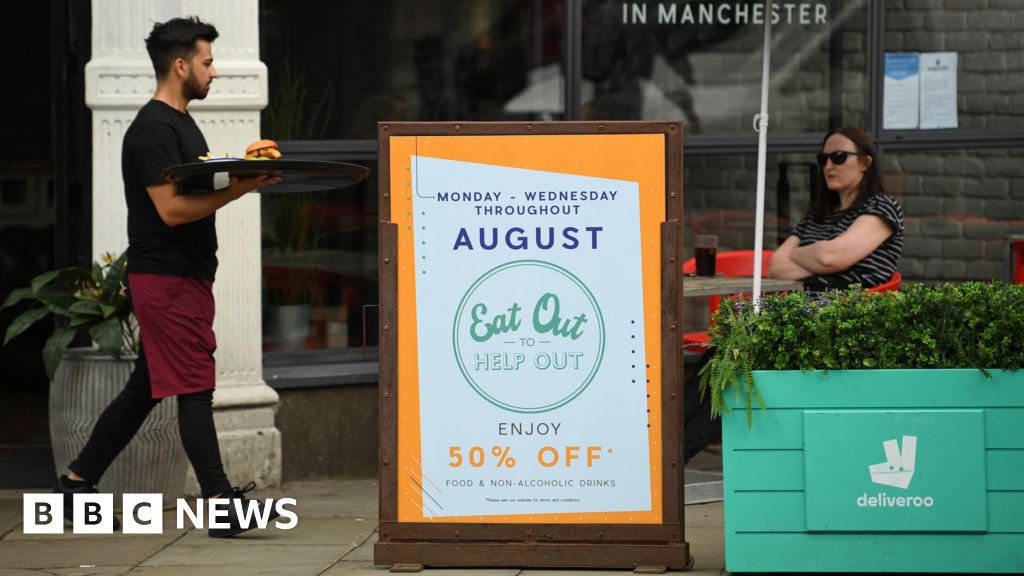Business
Lights, camera, investment: From buying movies to co-owning it – Hollywood pushes into Indian cinema – The Times of India

Foreign studios are stepping up their game in India’s entertainment market as cinema revenues recover and streaming platforms grow. According to industry insiders, this marks Hollywood’s “second wave” in the country, with global players now moving beyond just distributing films to actively producing and co-owning Indian-language projects.Amazon MGM Studios has announced plans to release three to four Indian films in theatres each year from 2026, before they appear on Prime Video.
“While our core business is streaming, we believe in the theatrical window and the magic of theatres,” said Nikhil Madhok, head of originals at Prime Video India and Amazon MGM Studios. “Depending on the kind of film that we are producing, we take a joint call with our creators in terms of which project can go to theatres first,” he further told ET.Warner Bros. Pictures is teaming up with Bhanushali Studios and JOAT Films in a five film deal, to develop Indian adaptations of classic Warner titles. Under the agreement, Warner will provide intellectual property and global distribution support, while the Indian studios will lead creative and production decisions.Meanwhile, Universal Studios, part of Comcast, is reportedly planning an indoor theme park near Delhi. The studio has also held early discussions with Excel Entertainment, founded by Farhan Akhtar and Ritesh Sidhwani, about a potential partnership, though nothing has been finalised.“Global studios are renewing their focus on Indian cinema, moving from distribution to local production,” Nitin Menon, managing partner at NV Capital told ET. “Amazon MGM’s Superboys of Malegaon, Nishaanchi and Mirzapur mark a shift toward theatrical storytelling. Warner Bros.’ partnership, coinciding with Paramount’s potential acquisition, could unlock capital for deeper expansion. Universal may follow with co-productions as Hollywood recalibrates its India playbook. Theatres are back in focus, though Netflix remains committed to digital-only releases.”According to Ormax, India’s box office collections for 2025 have reached ₹9,409 crore as of September, up 18% from last year. The country also has 601 million OTT users, including 148 million paying subscribers.After pandemic lows, multiplex attendance and ticket sales are rising across languages. Streaming continues to grow, creating a twofold revenue model for films: theatrical runs plus digital licensing. For studios, local productions also allow them to create intellectual property that can generate music, merchandising, and streaming revenue globally.“Hollywood’s second wave in India is about reducing risk, not planting flags,” said Adi Tiwary, a Sydney-based producer. Tiwary further told ET, “The trend is to build with Indian partners, use library IP to de-risk, and let theatrical and streaming work in tandem. Hollywood has learned that India rewards local muscle and disciplined windowing.”Neeraj Vyas, CEO of Bhanushali Studios, added, “They’re re-entering cautiously, focusing on mid-budget, locally rooted films rather than big productions. With cost rationalisation underway in the US, it’s about testing the waters and understanding audience shifts.”10 years ago, Hollywood studios largely operated in India through distribution deals, buying completed films for high guarantees. However, today global players are co-developing stories and co-owning intellectual property, aiming to build franchises that can be marketed worldwide.“The foreign studio model has matured from buying content to co-owning it,” said Suniel Wadhwa, co-founder of Karmic Films.
Business
Income Tax Officials Issue Fact-Check Against Fake e-Mails Offering To Download e-PAN Card

New Delhi: The Income Tax Department has issued a fact-check to alert citizens against fake e-mails asking people to download e-PAN card, an official said on Sunday. The fact-check, issued with the help of the Press Information Bureau (PIB), said, “Beware of Fake Emails asking to download e-PAN cards.”
The PIB also circulated a screenshot of showing the phishing e-mail which offered “A step-by-step guide” to download e-PAN card online. The Income Tax Department clarified that it does not request detailed personal information through e-mail.
“Do no respond to any emails, links, calls and SMS asking you to share financial and sensitive information,” the department said. The Income Tax Department added it does not send e-mail requesting your PIN numbers, passwords or similar access information for credit cards, banks or other financial accounts, a statement said.
The Department, in an advisory, said that if people receive an e-mail from someone claiming to be the authorised by Income Tax Department or directing you to an Income Tax website then do not reply and do not open any attachments.
“Attachments may contain malicious code that will infect your computer,” it added. The advisory said, “Do not click on any links. If you click on links in a suspicious e-mail or phishing website then do not enter confidential information like bank account, credit card details.”
It also cautioned citizens against cutting and pasting the link from the message into their browsers as the phishers can make the link look like real, but it may actually send you to different websites.
The Department also said, “Use anti-virus software, anti-spyware, and a firewall and keep them updated. Some phishing e-mails contain software that can harm your computer or track your activities on the internet without your knowledge. Anti-virus and Anti-spyware software and firewall can protect you from inadvertently accepting such unwanted files.”
Encouraging tax-payers to report phishing mails, the I-T Department said, “If you receive a phishing mail not pertaining to the Income Tax Department, forward the same to incident@cert-in.org.in.”
“If you receive an e-mail or find a website you think is pretending to be of Income Tax Department, forward the e-mail or website URL to webmanager@incometax.gov.in. A copy may also be forwarded to incident@cert-in.org.in,” it added.
You may forward the message as received or provide the Internet header of the e-mail, the advisory said. The Internet header has additional information to help us locate the sender. After you forward the e-mail or header information to us, delete the message, the advisory added.
Business
Water boss should not resign as problem ‘far wider than individual people’

The chief executive officer of the water company involved in a major supply issue in Kent should not resign as issues in the industry go “far wider than individual people”, a director has said.
South East Water (SEW) has issued a “boil water notice” for 24,000 homes in and around Tunbridge Wells who have experienced a loss of water or low pressure since November 29.
On Wednesday the company said the “water quality issues” which caused the initial shutdown had returned.
They have decided to continue pumping water so that people can flush their toilets and shower, but the water cannot be drunk without being boiled first.
Liberal Democrat MP Mike Martin told the BBC earlier this week that it had been “a total failure of leadership” and called for the chief executive of SEW, Dave Hinton, to resign.
Douglas Whitfield, SEW water supply director, said resignation demands “fundamentally misunderstand the challenges that we’ve been facing in this incident as a company over the last few years, as an industry going forward, I don’t think that’s helpful”.
He told BBC Radio Kent: “I would point you to the independent Water Commission that sets out the challenges the water industry are facing and the changes it needs to make.
“They’re far wider than individual company and individual people.”
Mr Whitfield apologised to customers and said the precautionary boil notice was in place for 10 days because “public health is our key priority”.
But he said he was unable to guarantee the problem ensuring water quality would be solved within the 10 days as he was unable to provide a “definitive answer” as to why the water was not responding to normal treatment.
He said: “For the last 24 hours, the treatment process has actually been operating within all of the water quality parameters.
“Until we’re confident that we’ve resolved the issue and that it won’t reoccur, we’ll be working to keep that boil notice in place, until we are confident we can take it off.
“I can confirm all the water we supplied up to the point we put the boil notice on fully complied with all the regulations.”
Mr Whitfield apologised for “overly optimistic” messages put out to customers since the problem started but said this was “one of the most complex events that we’ve ever had”.
He added: “I can only apologise to the customers for the last week and the communications that we gave during the incident were on what we thought was going to happen at the time.
“The incident has changed from what we thought was happening at the weekend to a much longer, much more complicated issue that we’re trying to resolve.”
The Consumer Council for Water (CCW), an independent body representing water consumers across England and Wales, has called for a thorough investigation into the incident.
Business
Covid fraud and error cost taxpayers £10.9bn, report will say

Josh MartinBusiness reporter
 Getty Images
Getty ImagesCovid-19 support programmes cost taxpayers nearly £11bn through fraud and error, a report will say.
The Covid Counter Fraud Commissioner Tom Hayhoe will say fraudsters exploited a “golden opportunity” when he shares his findings with MPs this week, the BBC understands.
Covid-era policies initiated by the previous Conservative government include the furlough wage subsidies, ‘bounce-back’ loans, the Eat Out to Help Out programme and one-off grants.
They were credited with propping up the economy throughout the Covid lockdowns, however, there has been criticism that the speed of the roll-out of financial support and a lack of eligibility checks led to widespread error and fraud.
Mr Hayhoe is expected to reveal the full scale of Covid-19 financial fraud when his final report is shared with MPs on Tuesday.
A lack of anti-fraud controls in Covid schemes that were set up quickly by ministers in Boris Johnson’s government are expected to be highlighted in the report and blamed for the huge figure.
Rushed rollouts meant “accepting a high level of fraud risk, without plans for managing or mitigating this risk,” it will say.
Details of the report were first published by the Sunday Mirror.
In September the government launched a voluntary repayment scheme for people and businesses to return pandemic scheme money with no questions asked until the end of December.
Mr Hayhoe has been tasked by Chancellor Rachel Reeves with trying to recover the public money lost to fraud and underperforming contracts using his experience in procurement as the former chair of an NHS trust.
His previous reports found that pandemic-era PPE contracts cost the British taxpayer £1.4bn on undelivered contracts and unusable gowns, masks and gloves.
Only a small fraction of that – £182m – has been recovered by HM Treasury.
The National Crime Agency is separately investigating possible criminal offences committed in the PPE procurement system.
-

 Tech1 week ago
Tech1 week agoGet Your Steps In From Your Home Office With This Walking Pad—On Sale This Week
-

 Sports7 days ago
Sports7 days agoIndia Triumphs Over South Africa in First ODI Thanks to Kohli’s Heroics – SUCH TV
-

 Entertainment7 days ago
Entertainment7 days agoSadie Sink talks about the future of Max in ‘Stranger Things’
-

 Fashion7 days ago
Fashion7 days agoResults are in: US Black Friday store visits down, e-visits up, apparel shines
-

 Politics7 days ago
Politics7 days agoElon Musk reveals partner’s half-Indian roots, son’s middle name ‘Sekhar’
-

 Tech7 days ago
Tech7 days agoPrague’s City Center Sparkles, Buzzes, and Burns at the Signal Festival
-

 Sports7 days ago
Sports7 days agoBroncos secure thrilling OT victory over Commanders behind clutch performances
-

 Sports7 days ago
Sports7 days agoF1 set for final-race showdown as Verstappen exploits McLaren blunder | The Express Tribune





